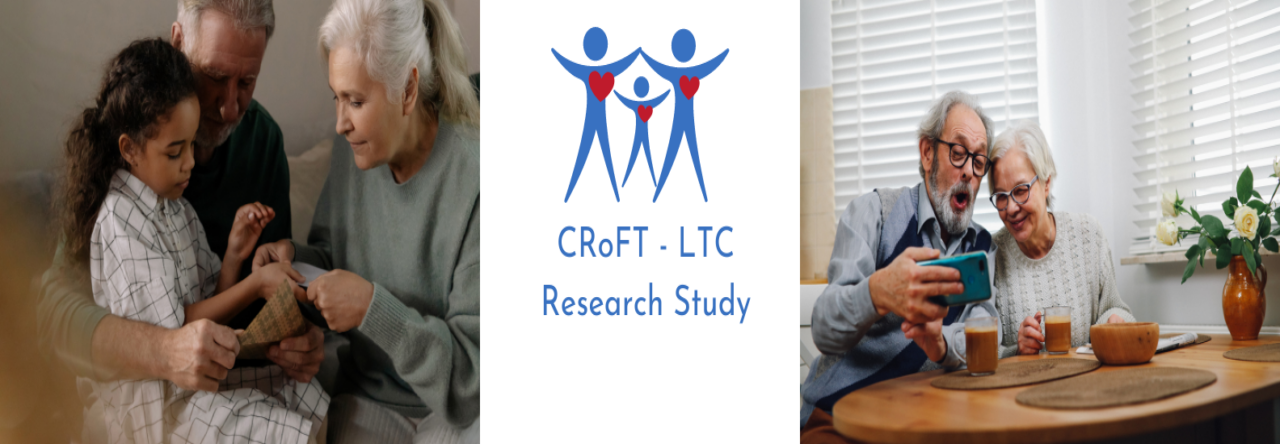Rosalyn Carter was once quoted as saying, “There are only four kinds of people in the world. Those who have been caregivers. Those who are currently caregivers. Those who will be caregivers, and those who will need a caregiver.” There are millions of family caregivers providing much needed care either at home or in care facilities for things like assisting with activities of daily living, and social and emotional support.
For those living in care facilities, family caregivers help them cultivate connections with others and engage in activities, facilitating social participation, and providing meaningful and important connections beyond the care community. Family visits contribute to residents’ social and emotional well-being, which is reason enough, but visits rarely are only social in nature. For example, staff rely on family to bring certain supplies, including certain medications and toiletries, and favourite snacks, all of which affect care staff to provide person-centered care. Family members typically advocate to ensure that residents’ care needs and preferences are addressed. Part of visiting involves “checking-in” and advocating by sharing information that helps care staff know residents and, ultimately, deliver more personalized care. Family caregivers also are essential for monitoring residents’ health and in identifying significant health status changes.
The COVID-19 pandemic, which is especially dangerous to older people, has disrupted the lives of older people and their family caregivers. It has become evident over the last 18 months, that older adults living in care facilities, are at a very high risk for mortality from COVID-19, particularly with asymptomatic workers and visitors unknowingly spreading the virus in the facilities. COVID-19 has exacerbated the already staffing shortages in care facilities and has heightened family caregivers’ stress and worry about the care their loved one has received, creating a sense of helplessness because they are unable to see how they are cared for. The Covid-19 restrictions have changed the way family caregivers provide support and stay connected to their older relatives in long-term care; what used to be done in-person is now done from a distance.
Trying to stay connected with their older relative in care has been supported from a distance. Not only do traditional telephone calls and letters help fill the gap, but also the use of newer technology. Family caregivers are staying connected through video calls via Facetime and Zoom. With the help of the care staff they are connected with residents using electronic devices. Such technology gives families the opportunity to see and talk with each other. Window visits is another way families have stayed connected. During such visits family see each other and may talk to each other over the phone which provides some comfort for families. Family caregivers have also taken on the responsibilities of arranging for delivery of essential items, such as food or medication. Family caregivers caring also are delivering essential items and care packages.
One key activity that family caregivers typically do for older relatives in long term care facilities is to monitor the quality of care they are receiving. Caregivers are having to find new ways to monitor when they are not able to visit, such as through increased communication with care staff or monitoring while connecting with their loved one through video or phone chats.
With the required social distancing, family caregivers can have a heightened sense of helplessness because they are not able to protect their family members or provide the type or amount of care that they want to provide. For their part, many family caregivers are experiencing anxiety, fear, guilt, and even depression as a result of being unable to participate in resident care in pre-pandemic ways. These negative experiences are escalated further in settings directly affected by COVID-19 cases and in residents’ end-of-life care and death. Family members’ health and well-being also are at risk by their exclusion, further exacerbating the public health consequences of the pandemic.
Public Health Officials, to help curb the spread of the disease and prevent further loss of life implemented many restrictions, including the restriction of visitors and nonessential personnel to long-term care. While such measures certainly helped to stop the spread of COVID, they also created a great deal of stress, worries, and challenges for family caregivers. COVID-19 will continue to transform the delivery of long-term services and supports, including caregiver support, as well as the ways families interact with loved ones into the future. For older adults and their caregivers, social distancing and fear may also continue when many have returned to work and the social distancing restrictions are lifted, attuned and sensitive to the needs of family caregivers who may be experiencing added burden, stress, and depression, and the differences in needs based on a variety family circumstances.
